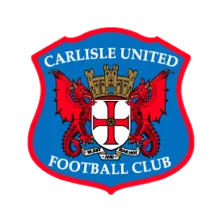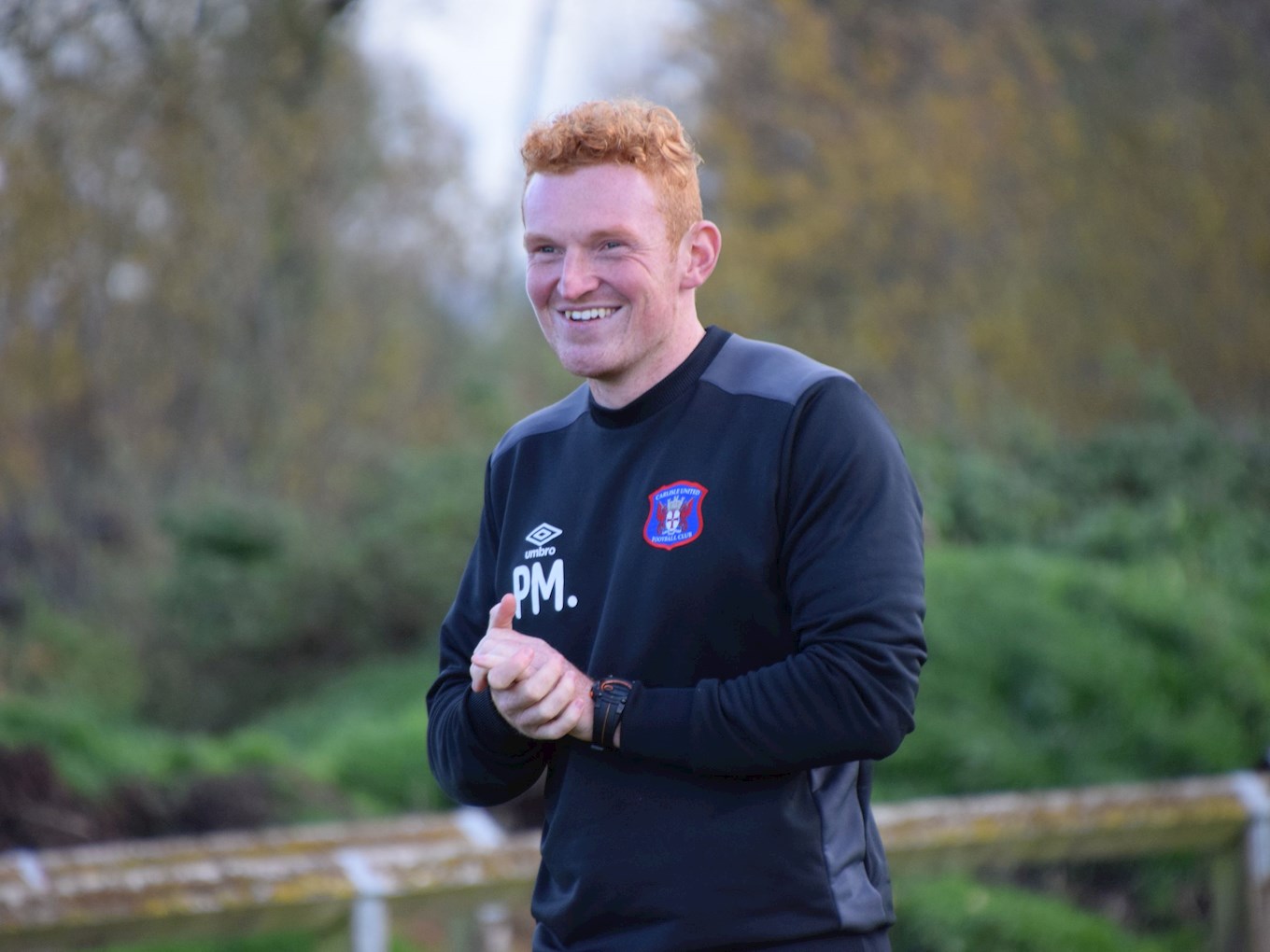We caught up with United's strength and conditioning coach Paddy Maher to talk about his role within the first team structure here at the club.
What’s your background in the strength and conditioning and sports science profession?
I started out as an intern at Castleford Tigers RLFC which I was doing along-side my undergraduate degree in Sport & Exercise Science. I was then introduced to Darren Edmondson who was the Barrow AFC Manager at the time and he asked me if I would do the S&C for them. This was a part time role, which I did alongside both working for the Cumbria Storm Rugby Academy and my Master’s degree in S&C. We won the league that year and subsequently went full time the next season in the Conference. After Barrow AFC I went back to Rugby League and worked for Barrow Raiders before ascertaining the position of Academy S&C at Carlisle United. Again I started part time just doing a couple of days a week, before taking the role on a full time basis last season. At the start of this season, I took the role of first team S&C whilst still overseeing the academy S&C and that’s what I’m doing to date.
What made you decide to follow this career path?
I’ve always loved sport, my PE teacher described me as a jack of all trades but a master of none. Although I would have loved to have been a professional sports person, my technical ability was average at best. My younger brother got all the sporting talent in the family and is a professional rugby player, he was the one who put a good word in for me at Cas Tigers which pretty much started my career off. I still wanted to work in elite sport and for me S&C was the next best thing to playing.
How much of an insight and foundation did working with the U18’s give you into working within the professional game?
The set up for the U18s is designed to mirror that of the first team, this is so if academy players progress to the first team it is not a complete shock to the system and they can manage the training load. As such, when I progressed to the first team, the design and timings of the sessions aren’t too dissimilar. Working with the U18s also allowed me to develop my multidisciplinary communication which is vital in order to best manage the players. Whilst also implement full time weight room and on field programmes which I now deliver to the first team players.
How did the first team opportunity arise?
At the end of last season, Lee Fearn the S&C coach left, leaving a vacancy for the position. I was asked if I could help during pre-season whilst continuing my academy S&C duties. As the weeks went by, I knew that I was enjoying the role more and more and I was asked if I would take the role full time whilst still overseeing the academy, and that’s what I did.
You seemed to settle very quickly, did you surprise yourself with that at all?
I did actually, normally I take a little time to get to know people before completely coming out of my shell, but it was a seamless transition really. I think this was because the management team accepted me quickly and allowed me to deliver my own sessions, the players bought into those sessions and I already had a good relationship with Dolly through his help and advice with the academy players last season.
What are your main duties within the first team structure?
My main duties with the first team are two fold, first of all to make sure the players are physically prepared to meet the demands of the game, whilst secondly trying to reduce injury rates. On a daily basis I am responsible for the warm up of the players which varies depending on the type of football session, this may include either, acceleration, max velocity or agility training. The delivery of individualised pre-habilitation and strength sessions for the players and the collection of monitoring data including GPS and recovery.
How much does your input shape the way individuals prepare and train?
Every morning both myself and Dolly prepare a list of whose available to train which is based upon the previous game, injury status and wellness questionnaire feedback. We take this list to the coaching staff and discuss what we are going to do that day, again this depends on where we are during the week. If certain players need a modified session such as they are returning from injury or they need a conditioning top up we plan ahead and transition it into the session.
Fans have noticed the use of Soccer Supplement products – can you tell us what you’re using and why?
We use the Recover 90 protein supplements after training and games. This is because football has large amounts of eccentric contractions which leads to structural damage to muscle fibres, by consuming the Recovery 90 we can aid in the repair and restructuring of the damaged tissue. We also use the Focus90 energy gels to maximise glycogen and subsequently energy stores both before and during games.
Why did you chose to work with soccer supplements when there others to choose from?
The supplement industry is huge now and there are a vast array of products on the market. However, you hear stories of supplements being contaminated with rat faeces, because they are literally made in somebodies garage so it’s important you choose both the right company and product. Soccer Supplements bears the informed sport logo meaning it is batch tested at source, this means that the product cannot contain any illegal substances which gives both myself and the players peace of mind. Soccer Supplements also provided us with a discount code so that the entire club including the academy can purchase heavily discounted supplements.
What sort of data are you able to gather and share with the players?
We collect GPS data following both training and match play, the devices provide various metrics which we use to help plan training. We monitor a combination of total distance, high metabolic load distance, number of accelerations and decelerations, sprint distance and top speeds achieved. We can then monitor these metrics over time to try and keep them between what we believe are safe limits. We also collect anthropometric data including heights, weights and body fats, in combination with various recovery data including wellness, groin and hamstring squeezes.
How different is the feeling between a first team match day dressing room and the youth team environment?
To the naked eye the dressing rooms look exactly the same. However, it’s the feeling that’s most different. Don’t get me wrong the academy players want to win and hate losing, but with the first team everything is much more heightened. When you win it’s a combination of excitement, joyfulness and relief and when you lose its awful, it’s a combination of anger, depression and frustration. Even for myself on the side-line, if we are 1-0 up with 10 minutes to go and holding on, it’s torturous.
How do you manage players with different attitudes, mental approaches and abilities?
Abilities is simple, everything can be progressed and regressed you just have to find the right starting point and go from there. Attitudes and mental approaches is the difficult one, most players beliefs are sculpted by their past experiences. If they’ve played for 15 years and never done any strength training it could be difficult to convince them to start now. I find the best way is to just sit down and speak with them individually and explain simply and practically how it can benefit them. As soon as the athletes sees the benefit then you’ve got them hooked.
How important is building relationships in the job you do?
Absolutely pivotal, I really don’t think there is anything more important. It’s all well and good knowing the science and information but if the players/management don’t trust me, I will never get any buy in.
For anyone wanting to pursue this line of work, what’s the best bit of advice you could give?
Get the qualifications, get any experience you can at any level and network as much as possible. Generally it’s not what you know it’s who you know.

